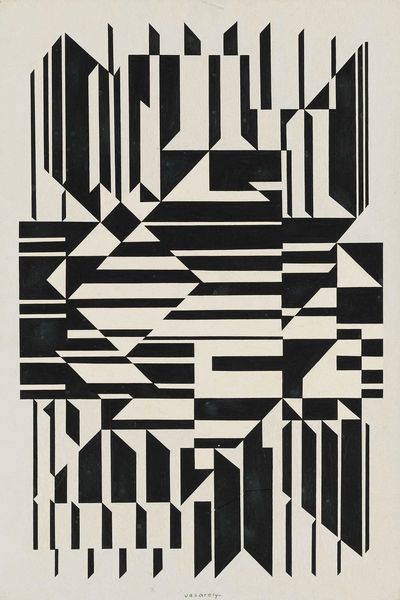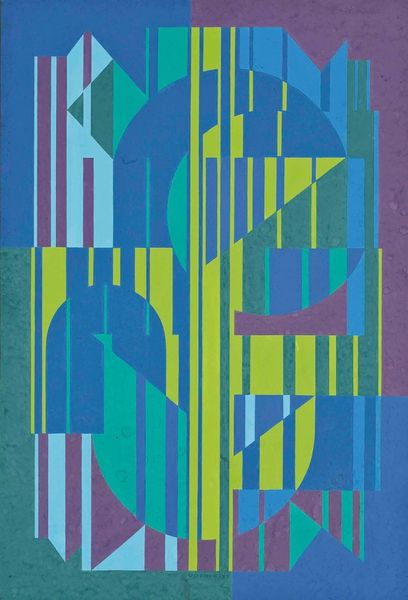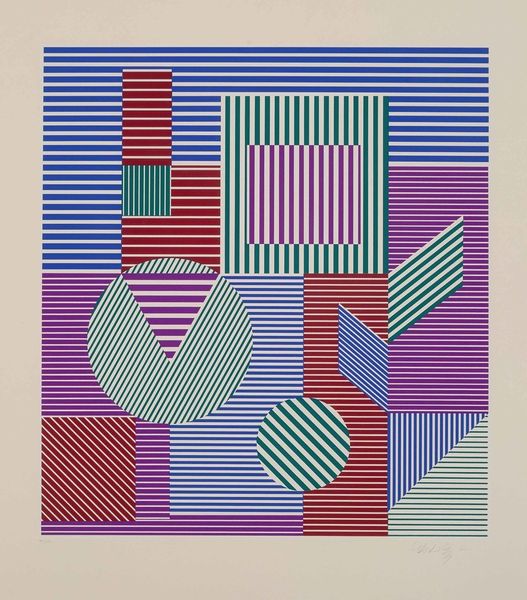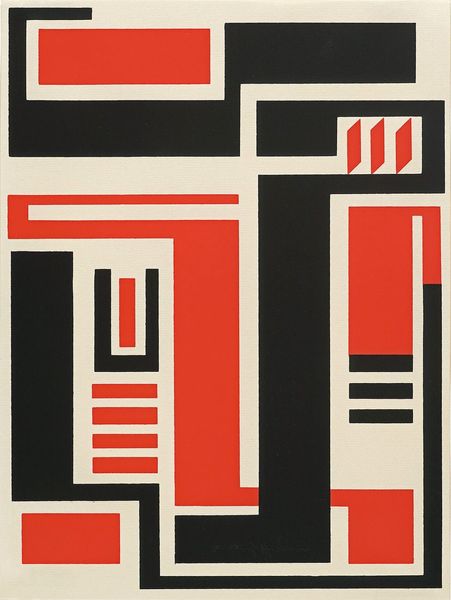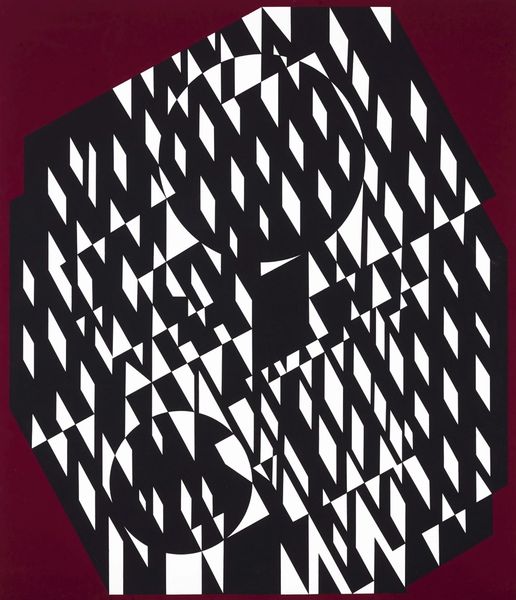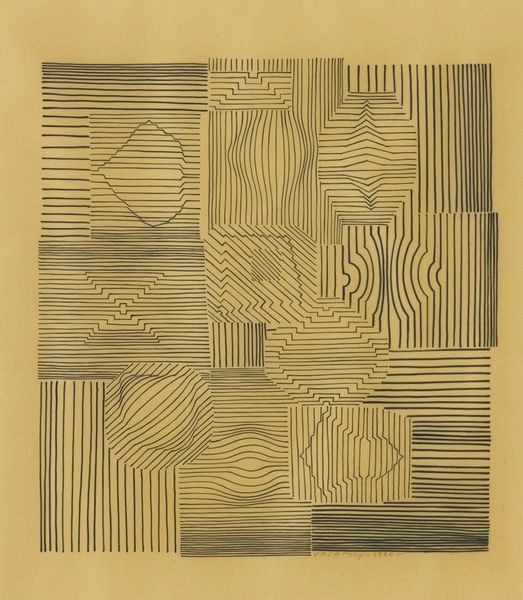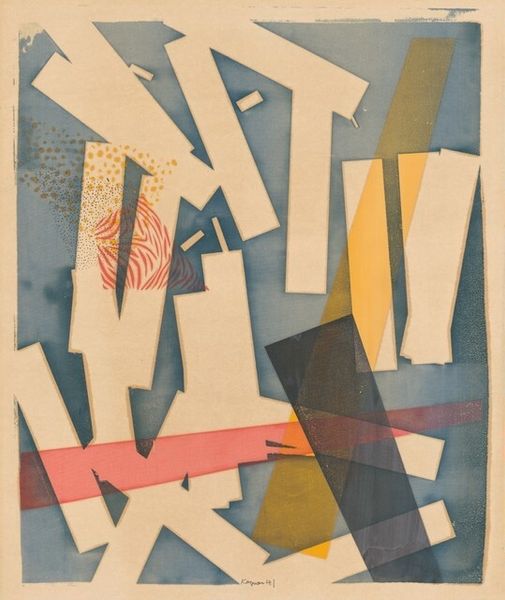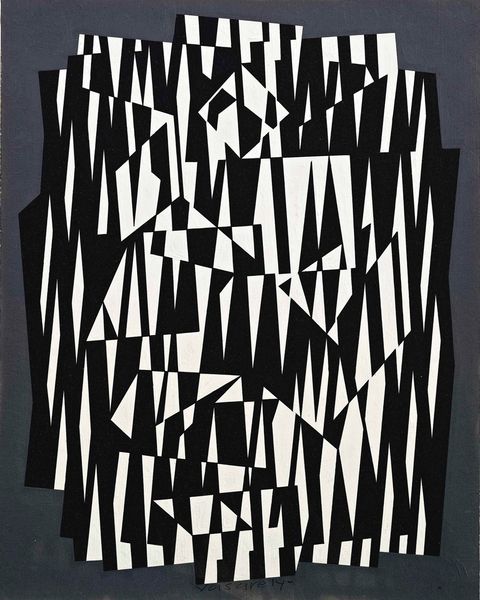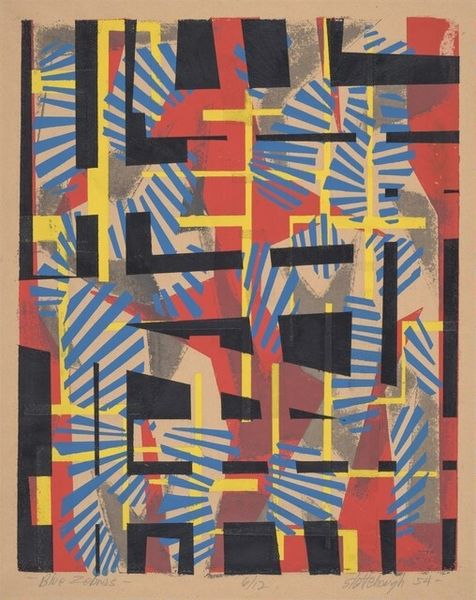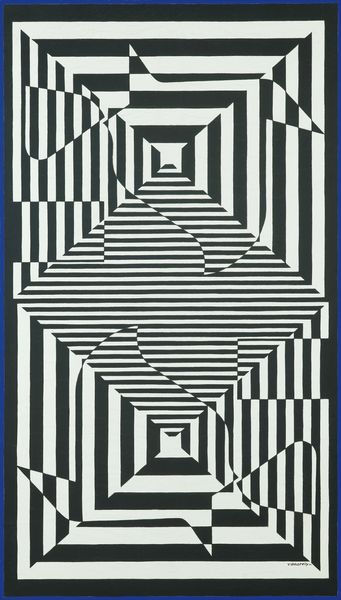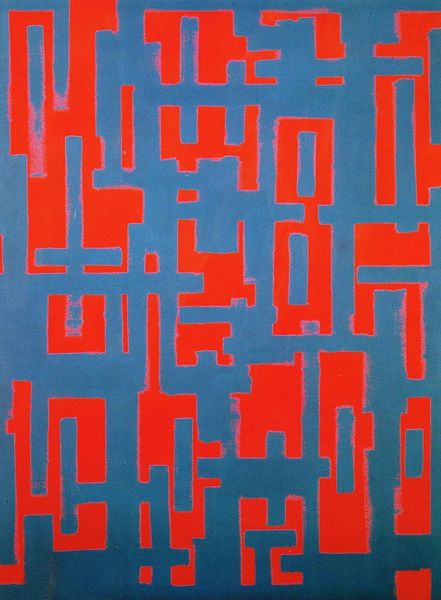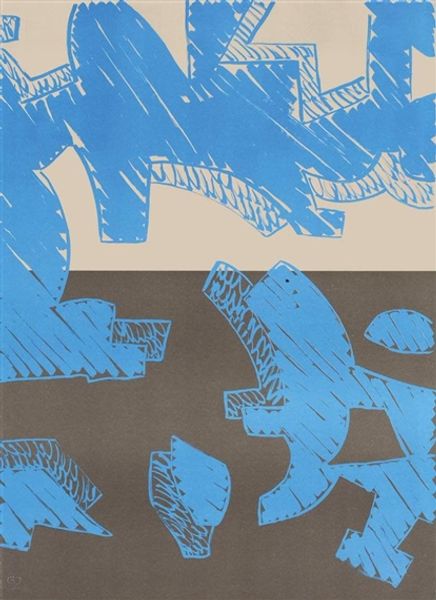
acrylic-paint
#
op-art
#
op art
#
acrylic-paint
#
geometric
#
abstraction
#
pop-art
#
modernism
Copyright: Modern Artists: Artvee
Editor: Victor Vasarely's "SAAVOS" from 1959, rendered in acrylic, is just fascinating. The way those geometric forms in blue interact with the yellow background makes the surface feel so active. It almost vibrates. How do you interpret this work? Curator: I see in "SAAVOS" a powerful statement on post-war production and the blurring of art and industry. Notice how the crisp lines and bold color contrast suggest a manufactured precision, almost like the artwork itself has been stamped out in a factory, which echoes Vasarely’s exploration of reproducible art and design. This piece questions the traditional definition of "artistic skill," doesn't it? Editor: Definitely. So, it's less about individual expression and more about the process itself? Curator: Precisely. Vasarely, operating within the burgeoning consumer culture, understood art as a product among products. "SAAVOS" speaks to the growing fascination with mass production and challenges notions of uniqueness and originality that have been central to art history. What do you think the materials contribute to this understanding? Editor: Well, acrylic paint, being a synthetic material, reinforces the manufactured feel, doesn’t it? It contrasts with the more "natural" connotations of oil or tempera. Curator: Exactly. The smooth, unblended application of acrylic denies any sense of brushstroke or artistic "touch," emphasizing its role in this system of reproduction. It becomes less about individual skill and more about precise, efficient execution, mirroring factory production. This invites us to rethink art within the socio-economic context. Editor: I never considered the paint itself being such a key aspect to understanding the artwork. This helps me see "SAAVOS" beyond just a pretty picture. Curator: Indeed. It is the relationship between materials, method, and cultural context that truly unlocks its significance. This is a wonderful piece for reflecting on how we value and define artistic labour.
Comments
No comments
Be the first to comment and join the conversation on the ultimate creative platform.
